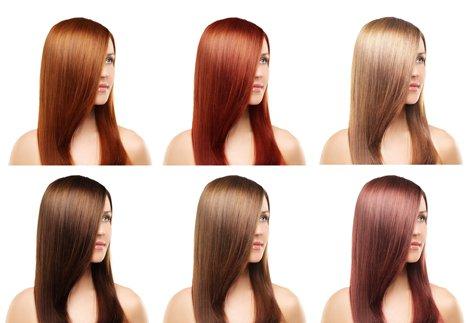Don't let anyone try to convince you otherwise: many people, both men and women, choose to color their hair. Sometimes it's obvious, like when you see a man walking down the street with a bright green mohawk, or a high school girl with cotton candy pink hair.
Other times, however, it is more subtle. People will dye their hair in order to cover grays, for example, or because they simply don't like the color they were born with. Some people change their hair color frequently, while others will choose a dye and stick with it for years.
So how do they go about choosing the right shades of hair dye? How does someone know if they should get a bright, vibrant, and unusual shade, or if they should go with something more typical?

The first step in choosing a hair dye, of course, is personal preference. If there's a color you just plain don't like, such as orange or black, obviously you shouldn't dye your hair that color. If you think platinum blondes always look silly, pass that section on by. Don't pick something for yourself that you're sure you wouldn't like on somebody else.
You also have to consider your environment. Many schools and businesses have hair color restrictions as part of their dress code. Before you dye your hair, make sure that the shade you chose is allowed. It would be terrible to lose a job simply because you opted to dye your hair an unnaturally bright shade of red.
Also consider how it will affect your mode of dress. Some hair colors clash with certain colors of clothing. This is true even if you choose a natural shade; redheads often struggle with finding pinks and greens that don't look strange paired with their hair. Vibrant, unusual colors are going to be even worse.
In addition, you have to factor in how quickly the dye will fade out, and how it will fade when it does. Unnatural shades of hair dye often lose most of their vibrant color within a couple of weeks. They can even change color after a few months, with blue dyes fading to green and purple dyes fading to shades of pink. The upkeep on those colors requires dyeing your hair more often than with a more natural shade.

As your hair grows out, your roots will start to show. If you've selected a hair color very different from your natural one, this can be pretty obvious. This is especially a problem for shorter people, since others will see the top of your head more often. Consider how you will deal with roots before you decide to dye your hair or what shade you'll use.
Dyeing your hair doesn't have to be a permanent decision; it washes out eventually or can be covered with other colors of dye. But since it does last several months, you should think carefully before selecting a shade of hair dye. There are pros and cons of both natural and unusual colors.

